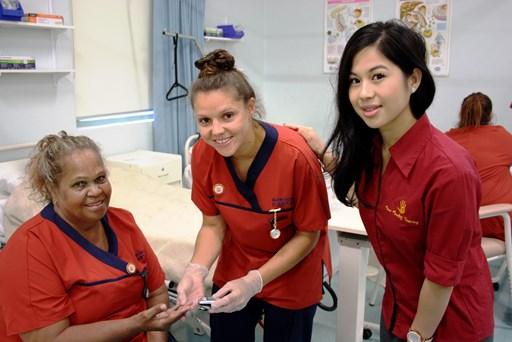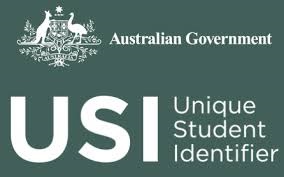There’s a huge range of training on offer from TAFE colleges and private training providers; with everything from the traditional trades such as building and construction or electrical to the creative arts and design, through to education, fitness or health, and high-tech training in areas like computing, information technology and engineering. With over 500 vocational education and training (VET) courses available, there's sure to be something for you.
The information provided here will give you an overview of how VET courses and qualifications work, and you can also find a range of course information by selecting an industry area from our home page.
Your local Jobs and Skills Centre can give you great advice and information about what training options would best suit your personal, career or education goals.
What sort of training do you have in mind?
Are you looking for a starter course to give you some basic skills and knowledge, an entry-level certificate course to help get your foot in the door for your dream job, or a higher-level qualification like a Certificate IV or Diploma to start or further your career in a specialist area? Or maybe you want to work towards a trade qualification through a pre-apprenticeship or start an apprenticeship or traineeship, so that you can combine study with work. The following information should help you work out what kind of training matches your needs.
In vocational education and training, a course is made up of a number of units of competency that together make up a qualification. Each unit of competency focuses on the skills required for an occupation – for example, in a retail course there would be a unit on operating point of sale equipment, and in an automotive course there would be a unit on inspecting an engine.
Units of competency and VET courses are developed by working closely with industry to make sure they’re based on occupational requirements – this means your VET course will give you the combination of skills, knowledge and practical abilities that you need for a particular job or occupation. Because of this, to be awarded your qualification, you will be assessed on what you know and what you can do – compared to industry standards – rather than on knowledge only, as with a traditional exam.
Most courses for VET qualifications are available in either full time or part time options, depending on the training provider. You will need to consider how much time you can allocate and commit to your study and how it will best fit into your lifestyle. The following options are available through all WA TAFEs, and many other training providers.
Full time studies
Full time study is usually the most efficient way to get a qualification. Generally a full time course means that you will be attending training four or five days per week, or around 20–25 hours per week. Most full time courses at WA TAFE colleges require an application process, as places may be competitive and/or the course may have entry requirements. You can find out more about this in How to apply and enrol.
Part time studies
Studying part time gives you the flexibility to keep a part time job or manage your other commitments. Depending on the training provider, part time may mean attending training one or two days a week or perhaps one day and one evening per week. Not all training providers offer part time studies for all courses.
Online study
Studying online can give you the flexibility to learn when and where suits you; however most online courses will still follow a schedule and require you to commit time each week. Not all training providers offer online study, and it may not be available for all courses, but those who do will be able to tell you more about how this works and whether it suits your circumstances.
Pre-apprenticeship programs
A pre-apprenticeship is a Certificate II program that includes a mandatory period of workplace experience coordinated by the training provider. The aim is to provide you with industry specific training, combined with adequate time in a real workplace to gain skills, knowledge and behaviours to enable transition into a full apprenticeship.
Apprenticeships and traineeships
These are a combination of work and study, where you are employed either full time or part time and work just as any other employee would, except that while you’re working you are also completing a qualification. This may involve attending training one day a fortnight, attending a two-week block of training twice a year, on-the-job training by your employer, or a combination of all these.
Short courses and community learning
These courses are generally only a few weeks or months in duration, and they do not result in a qualification. They’re great if you want to do a quick course to improve your skills in a particular area – for example; learning a new software program, learning how to tile your kitchen, develop your skills in photography or music or even learning a new language. Classes for short courses are usually run once or twice per week, often in the evening.
There are eight levels of qualification in the VET system. In general terms, Certificates I and II offer skills and knowledge to get you started in an entry-level job, Certificates III and IV and Diploma levels are for more specialised jobs such as those in the trades or technology areas, and Advanced Diploma to Graduate Diploma levels offer a more complex and higher level of skills and knowledge.
The Australian Qualifications Framework is the national policy for regulated qualifications in the Australian education and training system. It provides the framework for qualifications in the school, vocational education and training and higher education sectors in Australia, enabling students to start at the level that suits them, then build up their qualifications as their needs and interests develop and change over time. You can achieve an AQF qualification in several different ways and from many different types of training and education providers.
The AQF ensures that all accredited VET qualifications are delivered and assessed using a consistent framework of skills and knowledge that mean your qualification is recognised around Australia and internationally.
Visit the AQF website to find out more about the AQF qualification levels.
Find your course
Once you know the area you’re interested in, your next step is to find a course.
The vocational education and training (VET) courses delivered in Western Australia that are listed on this website's course list are funded through the Department of Training and Workforce Development; these are referred to as publicly funded training. A range of training options and courses for priority industry areas and occupations are subsidised under Jobs and Skills WA; including apprenticeships and traineeships, and foundation and equity courses, to reduce the cost of training in priority skill areas. To find out more about which courses are subsidised, take a look at the information available on the main Training page.
Other options
Other non-publicly funded courses are available through TAFE colleges and private providers; however these are not included in this website's course search.
To find these other courses, you can search a list of all VET courses in WA via the myskills.gov.au website.
We can help
If you would like some advice or assistance in choosing the right course, or in matching a course to your career goals, your local Jobs and Skills Centre can help.

Choosing a training provider
If you have already decided what area of study you want to pursue, your next step is to find a training provider that offers the course or qualification you’re interested in.
There are over 500 registered training providers across Western Australia, and together they offer more than 1,000 nationally recognised VET courses and qualifications, and access to a range of traineeships and apprenticeships.
If you need assistance choosing a training provider, your local Jobs and Skills Centre can help.
Registered training organisations (RTOs)
If you’ve chosen an accredited vocational education and training course, look for a training provider that’s registered by the WA Training Accreditation Council or the Australian Skills Quality Authority.
An RTO is registered to deliver VET training that:
- is recognised by all registered training providers throughout Australia;
- is part of a training package or accredited course that has been developed to meet the needs of a particular industry; and
- results in a qualification that is part of the Australian Qualifications Framework.
Often you will find that a course is offered by more than one training provider. In these cases, you’ll need to look at what each provider offers and choose the one that you feel can offer you the best quality training, with experienced trainers and good facilities. You may also find that the units of study within a course may be different from one provider to another, so always check to make sure the course on offer covers the units you want.
To find out more about the important things to look for when choosing a training provider, check out this useful information from ASQA. It includes a checklist that you can use to help with your choice.
WA TAFE colleges
Western Australia's TAFE system offers quality vocational education and training (VET) courses and qualifications, with a range of training options and choices for students, industry and the community.
WA has five TAFE colleges, with 70 campus locations and specialist training centres located across Perth and all regional areas from Albany in the south, to Kalgoorlie in the east and Kununurra in the north. Together, these TAFEs offer over 900 VET qualifications covering a diverse range of industry areas and occupations with courses available full time, part time, on campus or online.
To find out more about what your local TAFE can offer, check out their website via the following links.
Private training providers
There are a number of private training providers registered to deliver nationally recognised qualifications to the Western Australian community, and a large number of these private providers offer courses that are subsidised through Jobs and Skills WA. Private providers also offer a wide range of courses on a full-fee paying basis.
Private providers can offer very flexible delivery strategies, and niche programs designed for their specific industry partners. They can also offer training and support programs designed for groups with specialist needs.
Training provider search
The course search available on this website will list the training providers for publicly funded courses in WA, but if you already know which training provider you want – for example; your local TAFE college – you can also search for courses by training provider.
Just use the 'filter' at the top of the search page to arrange the information the way you want it.
Your local Jobs and Skills Centre can also assist you to choose a training provider that offers the course you're interested in.
The myskills.gov.au website has a search option for all training providers in WA, not just those offering publicly funded courses.

Applying, enrolling and course fees
Once you have decided on the course you want to do, and found a training provider that you’re happy with, the next step is to apply and/or enrol in your course and pay the course fees.
It’s a good idea to contact the training provider directly or check their website for any eligibility requirements you need to meet, and get the dates and other details for enrolling. Each of the TAFE colleges provides this information on their website, as do most private training providers.
Please note that only general information is provided here – always check with the training provider for specific details about applying and enrolling, and course fees. You can find out about applying and/or enrolling in a course via the course search – follow the link in the course description for more information.
Getting a Unique Student Identifier (USI)
If you are a new or continuing student undertaking nationally recognised training, you need a USI in order to receive your qualification or statement of attainment. Your USI will give you access to an online record of all training you have done since 1 January 2015, and you can also get a written record of your training which can be used when applying for a job, seeking a credit transfer or demonstrating pre-requisites ie study you have already completed.
Getting a USI is easy – just follow the six steps.
- STEP 1: Get at least one form of ID ready, eg your driver's license, Australian passport, Medicare card, birth certificate, visa (for non-Australian passport), Immigration Card or Citizenship Certificate.
- STEP 2: Have your personal contact details ready; you’ll need address, email and/or phone number.
- STEP 3: Visit usi.gov.au and select Create a USI.
- STEP 4: Agree to the terms and conditions and follow the steps on screen.
- STEP 5: Write your new USI number down and keep it somewhere safe.
- STEP 6: Have your USI number with you when you enrol.
Fees and charges
The WA State Government, through the Department of Training and Workforce Development, funds a significant share of the vocational education and training delivered in Western Australia. Training providers delivering this publicly funded training must follow the Department’s VET fees and charges policy which sets out the fees that apply to your course – your training provider will be able to give you information about the fees for your particular course.
A large number of courses are subsidised under Jobs and Skills WA – information about subsidised training is available on our main Training page.
Types of fees
There are three types of fees that training providers can charge.
| Course fees | Resource fees | Other fees |
|---|---|---|
|
Course fees are determined by multiplying the applicable course fee rate by the nominal hours for each unit in the course that you enrol in. These fees are standardised through the VET fees and charges policy. |
Resource fees are charges for materials that are considered essential to a course or unit of study, but are not part of the course fee. The resource fee(s) cover items purchased by the training provider that you need to use for your course; such as workshop materials, workbooks and essential uniforms. |
Training providers may charge students other fees for items that are non-essential to the course; for example, car parking or a security pass. These fees will vary, and in some cases will not apply. |
Help with fees
There are several ways that you may be able to get assistance with your course fees and costs.
Eligible students can apply to get a loan to pay for their fees through the Australian Government’s VET Student Loans scheme. The loan is to cover fees for eligible Government subsidised courses at the Diploma or Advanced Diploma level. Under this scheme, once you’re employed and your income exceeds a set level, you start repaying the loan through the tax system.
For more information contact your training provider, visit the Australian Government's VET Student Loans website or contact the student hotline on 1800 020 108.
The following students are eligible for a concession rate on fees for training up to Certificate IV level:
- holders (and their dependants) of either a pensioner concession, repatriation health benefits or health care card;
- recipients (and their dependants) of AUSTUDY, ABSTUDY or Youth Allowance;
- inmates of a custodial institution (and their dependants); and
- in 2018, students born on or after 1 July 2000 who are at least 15 years of age.
The concession rate does not apply to foundation skills and equity courses, Diploma and Advanced Diploma courses (except where specified), and existing worker trainees.
If you are unable to pay your course fees up front, you may be able to work out a payment plan with your training provider so that you can pay by instalments.
In circumstances where a student is experiencing severe financial difficulties, a training provider can choose to waive the course fees.
You’ll need to talk to your training provider about these options.
Apprentices in certain trades may be eligible for financial assistance such as allowances for the cost of tools, incentives for wage top-ups and allowances for living away from home. Travel and accommodation allowances may also be available to lessen the cost of the training component of your apprenticeship.
Your Australian Apprenticeship Services Network (AASN) provider will be able to provide you with assistance.
The Department of Training and Workforce Development assists apprentices and trainees with the cost of travel and accommodation related to the completion of the off-the-job training component.
There's also a large number of courses that are subsidised under Jobs and Skills WA, so that you do not have to pay full fees – information about subsidised training is available on our main Training page.

Training and assessment pathways
Vocational education and training is a great pathway on to other things – whether that’s your first job or a change in career, or maybe a higher level qualification or getting into university. The training and/or assessment pathway you choose will depend on your current situation, the goals you want to achieve, and the type of qualification you are doing.
Your local Jobs and Skills Centre can provide you with advice and information on what kind of pathways are available to you.
Recognition of prior learning (RPL)
Sometimes it can be difficult to prove your skills, experience and abilities to potential employers. Depending on your background, you may be able to have your skills recognised through recognition of prior learning. RPL may help you complete a nationally accredited VET qualification sooner, which can boost your resumé, open doors for new employment opportunities or lead you to further training.
RPL involves an assessment process that looks at:
- any previous study you’ve done;
- the work experience you have;
- your life experiences; and
- your skills and knowledge.
Most WA training providers offer an RPL option for a range of qualifications; however services, options and costs will differ. For more information, use the course search to find a training provider that delivers the qualification you're interested in, and contact them directly.
The following information may also be helpful.
To find out more about RPL, contact your local TAFE college or training provider. Your local Jobs and Skills Centre can provide advice and assistance about your RPL options.
Recognition for overseas qualifications
If you have qualifications and skills obtained overseas you may be able to have them recognised in Australia. The Department of Training and Workforce Development has a specialist team that can assist migrants who are permanent* or temporary residents of Western Australia with recognition of their overseas gained qualifications and skills. This is a free service available only to WA residents.
The Department can assess post-secondary qualifications including:
- formal technical and vocational qualifications (Certificate IV and above); and
- formal higher education qualifications (bachelor degree and above).
To find out more about recognition of overseas qualifications, visit the Migration portal website at migration.wa.gov.au.
*Permanent Residents (including 309, 310, 820 and 826 visa holders)
Pathways to university
Completing a VET qualification can move you towards a higher level qualification or getting into university, where entry to some courses can be very competitive. A training pathway through VET may also reduce your study load and/or the length of your university course, and minimise your HECS debt. Some VET qualifications, particularly those at Advanced Diploma to Graduate Diploma levels, may make you eligible for advanced standing or course credit.
Your training provider will be able to tell you more about how university pathways work and whether your chosen VET course is suitable. You should also look for information on the university websites to see what their eligibility requirements are, as each university will have different guidelines depending on the course and/or study area you’re interested in.
Your local Jobs and Skills Centre can also provide advice and assistance with pathways to university.













